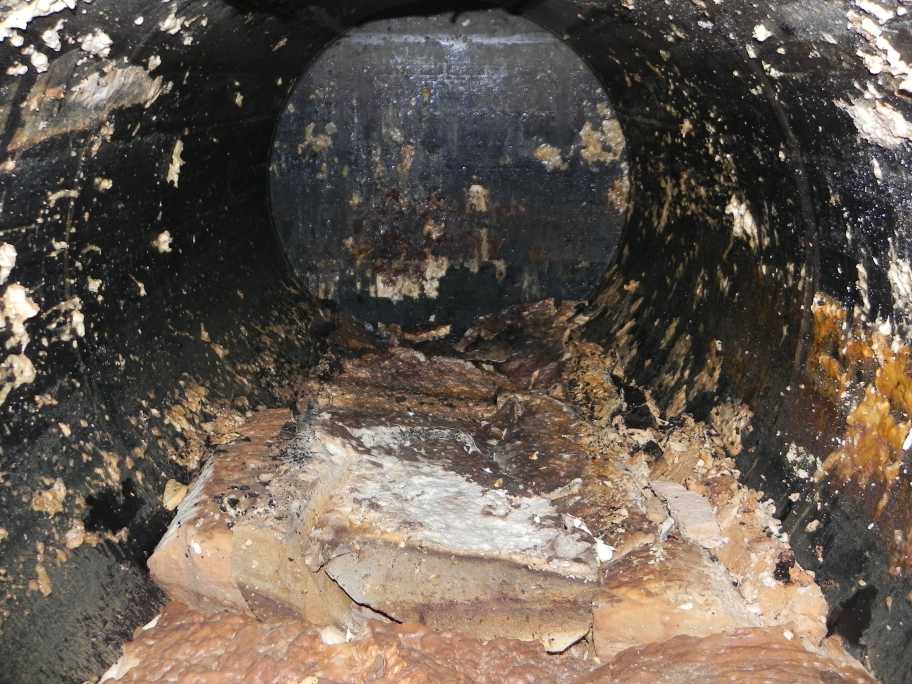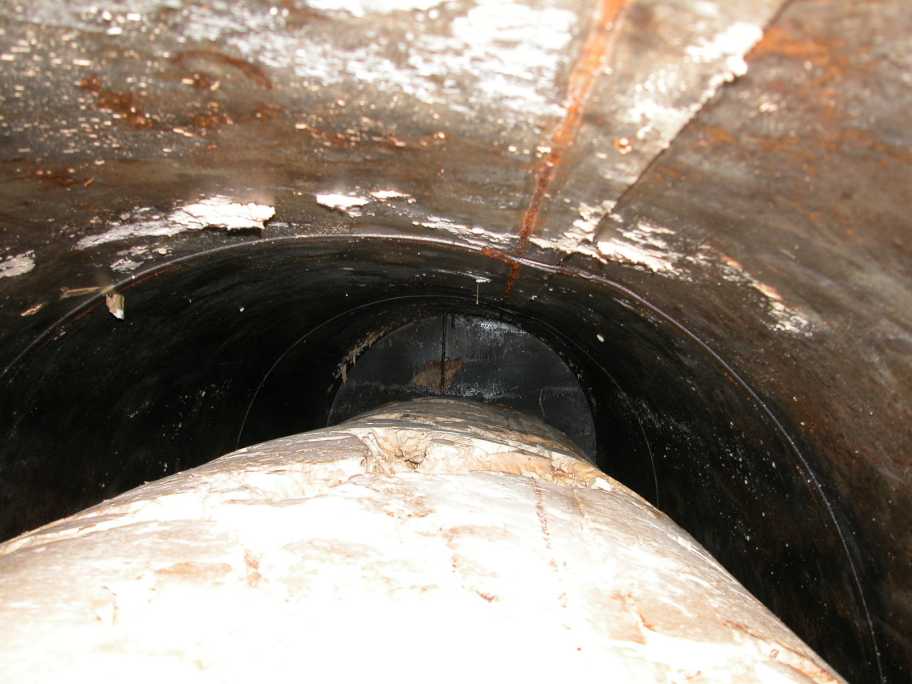Underground Oil Tank Abandonment
Because removal of a leaking underground oil tank and the associated contaminated soil is not required in most cases, in-place tank abandonment by filling the tank with an inert solid is Cedar Rock’s preferred method for taking an underground heating oil tank out of service. Cedar Rock’s tank abandonment procedure ensures the tank cannot cause any future problems, and provides thorough documentation.

Surface overflow from an old underground oil tank. Proper abandonment will prevent this possibility.
Buyers, lenders, and other stakeholders may require the abandonment of a tank prior to the sale of the property, whether or not it has leaked.
Do I have to abandon an underground oil tank?
In most cases, regulations do not require anything to be done with a leaking residential oil tank. But whether or not a tank has leaked, many underground oil tanks still contain oil which can cause environmental problems in the future. Corrosion may cause the tank to start leaking, or high rainfall may cause a surface overflow leak as shown in the photo. Whenever possible, Cedar Rock recommends the proper abandonment of any underground tank to prevent future problems.
Tank abandonment alone may not satisfy State requirements in certain situations, such as when there are water supply wells within 150 feet of a leaking heating oil tank. These wells do not have to be in use. After a site inspection, Cedar Rock will advise on possible courses of action to satisfy State regulations.
Typical Cedar Rock tank abandonment procedure.
- Soil overlying the tank is hand excavated, and a hole large enough to allow access for cleaning and filling activities is cut at one end of the tank.
- Fluids are pumped out of the tank. The tank interior is then pressure washed to remove all oily sludge.
- An excavatable flowable fill, a sandy cement slurry that completely fills the tank without leaving air pockets and that provides strength, is poured into the tank.
- The landscape is restored. As the photos below show, there is little sign that a tank had been taken out of service.
- A report is produced to document the abandonment activities.
Cedar Rock does not recommend other tank abandonment methods such as filling a tank with foam or sand. These methods usually cannot provide evidence that all oil and oily sludge has been removed from the tank, nor do they provide the same strength as a cement slurry. See further down this page for more on the use of foam to abandon underground oil tanks.
Thorough documentation is essential!
For each tank abandonment, Cedar Rock produces a report that details each step of the procedure and documents the work with color photos taken at different stages of the tank abandonment. The photos provide proof that the tank was fully cleaned of its contents and then properly abandoned. The report is signed by a NC Licensed Geologist.
Photographic documentation.
Photographic documentation demonstrates conclusively that the tank has been cleaned of its water and/or oil, and oily sludge contents. This documentation can be used to show potential buyers and other relevant stakeholders that the tank has indeed been properly cleaned and abandoned, and that there is no risk of the tank causing further problems due to leakage. Below are examples of the photos routinely included in a Cedar Rock abandonment report.

Tank location prior to abandonment.

Tank fluid contents prior to pumping out.

Tank after fluids pumped out and pressure cleaning.

Tank being filled with excavatable flowable fill cement slurry.

Tank after being filled with excavatable flowable fill cement slurry.

Tank location restored after completion of abandonment.
What about filling a tank with foam?
The photo below shows a 1,000-gallon oil tank (approximately 10 feet long) that had been filled with foam. Subsequently, the tank filled with fluids which were pumped out by Cedar Rock. You can see that the foam had been in contact with the upper part of the tank but had shrunk to a greatly reduced volume. When the metal rusts away the ground will eventually subside. The second photo demonstrates how foam shrinks over time.

Interior of a tank previously filled with foam, after pumping out 1,000 gallons of fluid that had entered the tank.

Shrunken foam inside an abandoned tank. Foam does not permanently fill the tank or provide any strength.
A tank is typically filled with foam through the fill pipe. The fluids remaining in the tank prior to its foaming are also removed through this small pipe. It is very difficult to remove the oily sludge from a five to twelve foot long oil tank through such a small opening, nor can the tank be thoroughly cleaned. Water can still enter a foam-filled tank, so it is still possible for oil to leak or flood out of the tank.
Sometimes detergent is poured into the tank to aid in removing sludge from the tank, but it is very difficult to apply the detergent to all the sludge coating the tank walls when working through a small opening. Some contractors use a petroleum absorbing solid material to absorb the oil. The material is left in the tank which means the absorbed oil is still in the tank and may potentially cause a leak if the tank fills with water and floods.
Also, be aware that heating oil supply companies usually do not remove all the oil when they pump out an oil tank because they do not want to remove any of the sludge. If they also abandon the tank it is quite likely that a significant quantity of oil will still be in the tank.
During the abandonment of a tank, Cedar Rock ensures that all fluids and sludge are removed from the tank, removing any possibility of petroleum leakage from the tank in the future. In many cases, tanks abandoned by other methods still contain oil and/or sludge and can still cause leakage!

